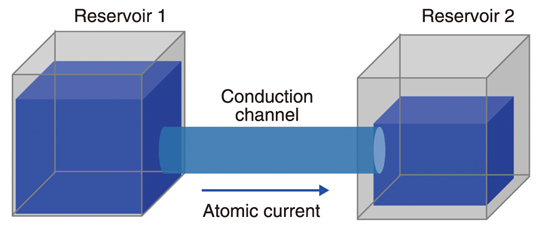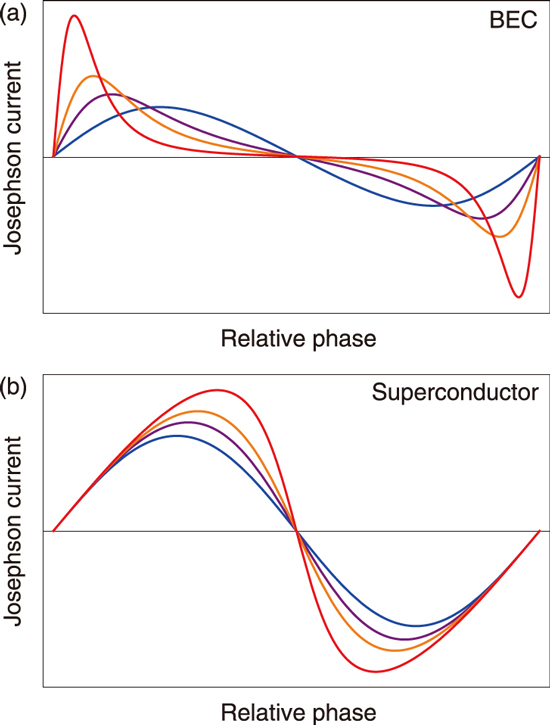
Fig.3-15 Mesoscopic system realized with cold atoms

Fig.3-16 Josephson currents in a Bose-Einstein condensate (BEC) and superconductor
Currently, quantum technologies that harness the principles of quantum mechanics, such as quantum computers, quantum communication, and cryptography, have garnered attention and become more competitive globally. To implement such technologies, however, it is necessary to understand quantum many-body systems in greater detail. Toward this end, cold atoms that are controllable artificial quantum systems have been in the spotlight as a platform for understanding the essence of quantum many-body systems.
Cold atoms trapped inside a vacuum chamber have been intensively studied since a Bose-Einstein condensate (BEC) was realized in 1995. One of the recent hot topics in the field of cold atoms is the study of mesoscopic systems (Fig.3-15).
Mesoscopic systems were originally investigated with electron systems such as semiconductors for which the microfabrication technology has been established. In particular, studies have focused on the quantum transport phenomena occurring through a mesoscopic sample. Recently, similar technology has been established for cold atoms, and thus, a connection with mesoscopic systems was created.
Mesoscopic systems with cold atoms allow the measurement of quantum phenomena that have remained elusive in electron systems. The mesoscopic transport with a BEC examined in this work is one such phenomenon and is of importance to understand the coherent properties of Bose particles. A BEC is a macroscopic quantum state in which the quantum mechanical phase is fixed. If two BECs with a nonzero relative phase are attached, a dissipationless current, also known as the Josephson current, is generated. The Josephson current originally was discovered in superconductors in which electrons with opposite spins form pairs, thereby forming a condensate with a fixed phase.
In this work, the behavior of the Josephson current in a BEC is shown to differ from that in a superconductor despite the similarity between the BEC and superconductor. In particular, the transport mechanisms in the BEC and superconductor are different, leading to drastic differences in the current-phase relations of the strong coupling regime between the reservoirs (Fig.3-16). We expect that the outcome is relevant to realize and apply quantum circuits with cold atoms.
This work is supported by MEXT Leading Initiative for Excellent Young Researchers (JPMXS0320200002), JSPS KAKENHI Grant-in-Aid for Scientific Research (C) (JP21K03436), and Matsuo Foundation.
(Shun Uchino)
<Previous: 3-6 | Next: 4 Nuclear Science and Engineering Research>